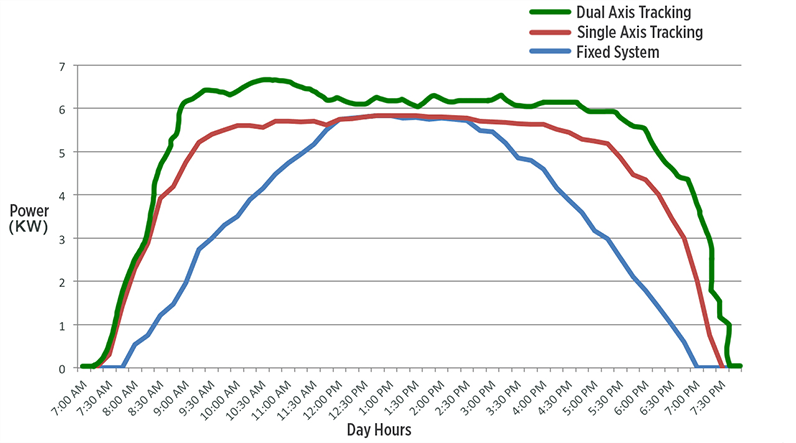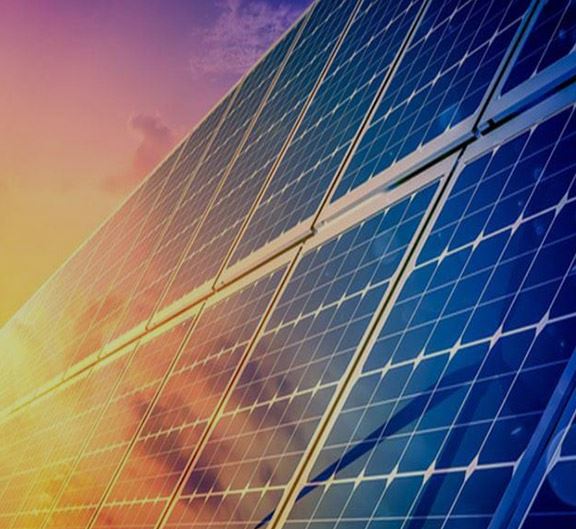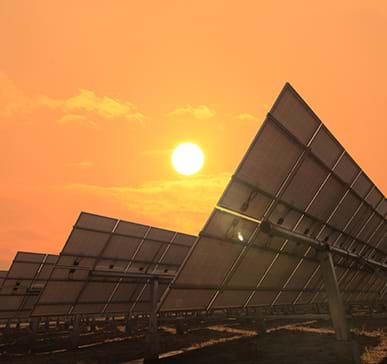
Today, the need for clean energy sources has increased due to the environmental damage of fossil fuels, global warming and climate change.
In terms of the location of our country on the globe, the sunbathing area and duration are quite good. For this reason, solar energy ranks first among alternative energy sources. Solar energy is converted into electrical energy by systems known as solar panels or photovoltaic cells.
In our country, new studies are being carried out in order to make the best use of solar panels and to obtain the highest efficiency due to the high installation costs of solar panels and long return periods.
In particular, due to the decrease in the energy production capacity of fixed solar panels during the day, mobile panel systems that can track the sun have been developed.
Similarly, moving reflector systems have also been introduced to the sector in order to focus the sun's rays on the panels.
In order to increase the energy production capacity of solar panels during the day, the design and implementation of a microcontroller controlled solar tracking system that can track the sun has been realized.
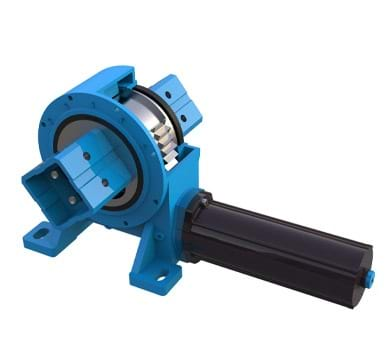
The purpose of the solar tracking system is to monitor the sun so that the sun's rays fall perpendicular to the panel throughout the day from sunrise to sunset. Thus, it is possible to make the most efficient use of the sun's rays during the day.
In order to realize this process, the position of the sun must first be determined. In order to determine the position of the sun, the solar sensing elements work simultaneously with the control circuit with a microcontroller.
According to the position of the sun, the control circuit sends the appropriate position signals to the drive circuits of the ascent and descent motor and the east-west motor on the system.
As a result of the position signals sent, the solar panel positioning motors are driven until they reach the specified position. The solar sensing infrastructure of the system is provided in two different ways. The first type of automation is determined by determining the sun positions of the current location with location-based software and the software in the system follows the path of the sun on a daily basis. Another type of automation is sensor-based software, which is based on the method of determining the brightness of light with real data from the sun.
This process continues until the sun's rays are perpendicular to the solar panels. With the orientation of the solar panels to receive the sun's rays in a vertical position, the electrical energy obtained from the sun reaches its maximum potential and works with high efficiency without any loss on the system. Thus, the daily energy gain increases. In single-axis solar tracking systems, an energy gain of 21% occurs. In another system, dual-axis tracking systems, in addition to the daily movement of the sun, the seasonal path of the sun is also followed, resulting in a total gain of 28%.

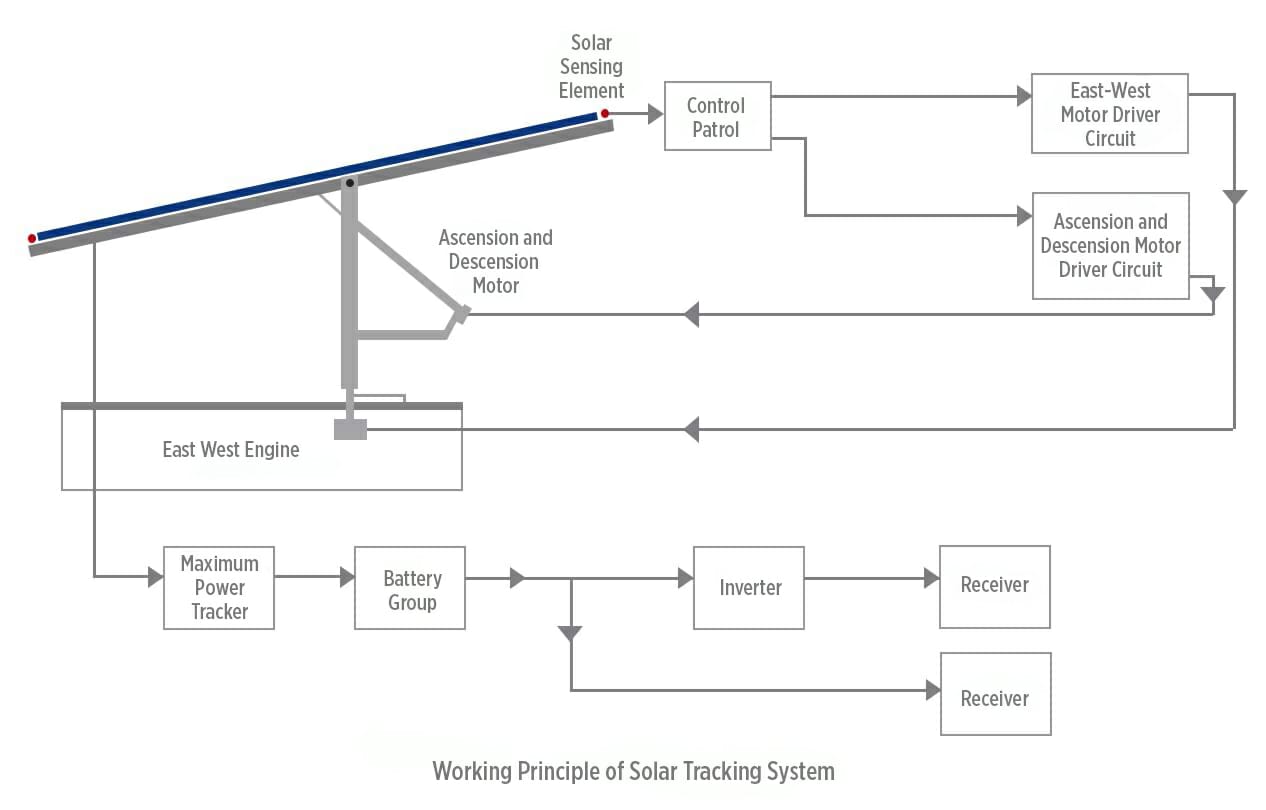

Structure of the Solar Tracking System
Solar tracking system is divided into two as electrical control system and mechanical system.
2.1. Mechanical System
In the mechanical system, the system chassis is formed with a two-axis horizontal and vertical radial positioning mechanism.
Solar panels are placed and fixed on the chassis. Thanks to the two-axis chassis, the solar panels will be moved radially in horizontal (ascending-descending) and vertical (east-west) directions to ensure that the sun rays are perpendicular to the panel surface continuously. The movement of each axis is realized by geared direct current or alternating current motors. The motors are placed on the chassis in suitable shapes to move the axes.
2.2. Electrical Control System
The most important elements of the electrical control system are the sensing elements and the microcontroller control circuit. The information from the sensing elements is evaluated by the control circuit and the position of the sun can be determined at any time. In another system, thanks to the geographically based location, the system follows a fixed path (sun line) for which information has been input before the system without the need for sensors. Other important elements are the electric motors and the drives of the motors that enable the chassis to move according to the appropriate solar position. In these systems, two geared direct current motors and alternating current motors are used to provide the radial movement of the solar panels in the east-west direction and the radial movement during the rise and fall. The drive circuits of the motors used move the direct current motors and alternating current motors in line with the signals coming from the control circuit and ensure that the solar panels reach the appropriate position. Thanks to the Solar Tracker, with the proper positioning of the solar panels according to the position of the sun, the process of transferring the electrical energy obtained from the sun to the battery group at the maximum point according to the light intensity is carried out. Our company closely follows all the problems and developments in this sector and produces alternatives for solutions. Among the products it produces, the mechanical systems developed for single and dual axis solar tracking systems are produced under the Remak Solar brand for the first time in Turkey.

Single Axis Solar Tracking Systems
Single-axis control systems are generally preferred in large investments, such as Solar Energy Farms, and follow the sun during the day by making the movement on the east-west axis. It provides a 21% increase in total energy gain from the moment the sun rises to the moment it sets.
Two Axis Solar Tracking Systems
In two-axis control systems, tracking is realized with two angle values indicating the position of the sun in the sky. In this control system, one of the axes is the azimuth axis (the axis on which the movement of the panel on the east-west line is adjusted) and the other is the zenith axis (the axis on which the height of the panel is adjusted). In other words, in addition to the daily movement of the sun, the seasonal movement of the sun is also captured, resulting in a total energy increase of 28%.

